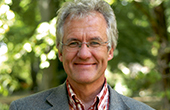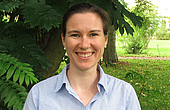BEF research in forests
Date
14-18 March 2022
09:00 - 15:00 (Germany) / 16:00 - 22:00 (China)
Location
online
Credit points
1.5
Target Group
The course is mandatory for all doctoral researchers of the 2nd cohort.
The lectures given by the PIs can be joined by all TreeDì members including master and bachelor students from Germany and China.
Contents
This 5-day online course aims at providing a comprehensive overview on current topics in forest BEF research. Each day, a team of TreeDì PIs will give lectures on a common topic and discuss two papers with the doctoral researchers.
09:00 - 12:00 (Germany) / 16:00 - 19:00 (China): Lectures by PIs on selected BEF topics
13:00 - 15:00 (Germany) / 20:00 - 22:00 (China): Discussion of selected papers
Preparation
All doctoral researchers of the 2nd cohort will be required to read the papers listed for each of the course days. You will be expected to actively participate in the discussion of the papers. For each paper, please prepare three possible questions, for example on the hypotheses tested, techniques used, results, figures, tables, and conclusions drawn from the results. This will help you to critically assess and read the papers in an analytical way and to contribute to the discussion.
To kick off the discussion in the seminar, always two of you will give a 15 min presentation on one of the papers together. There will be up to two paper presentations per class. You will receive a doodle link allowing you to choose your paper you would like to present in the seminar. The following points should be covered in your presentation: 1) scientific background, 2) motivation/research questions/ hypotheses of the study, 3) methods used, 4) main results, 5) discussion, conclusions and implications 6) strength and weaknesses of the study.
Schedule













